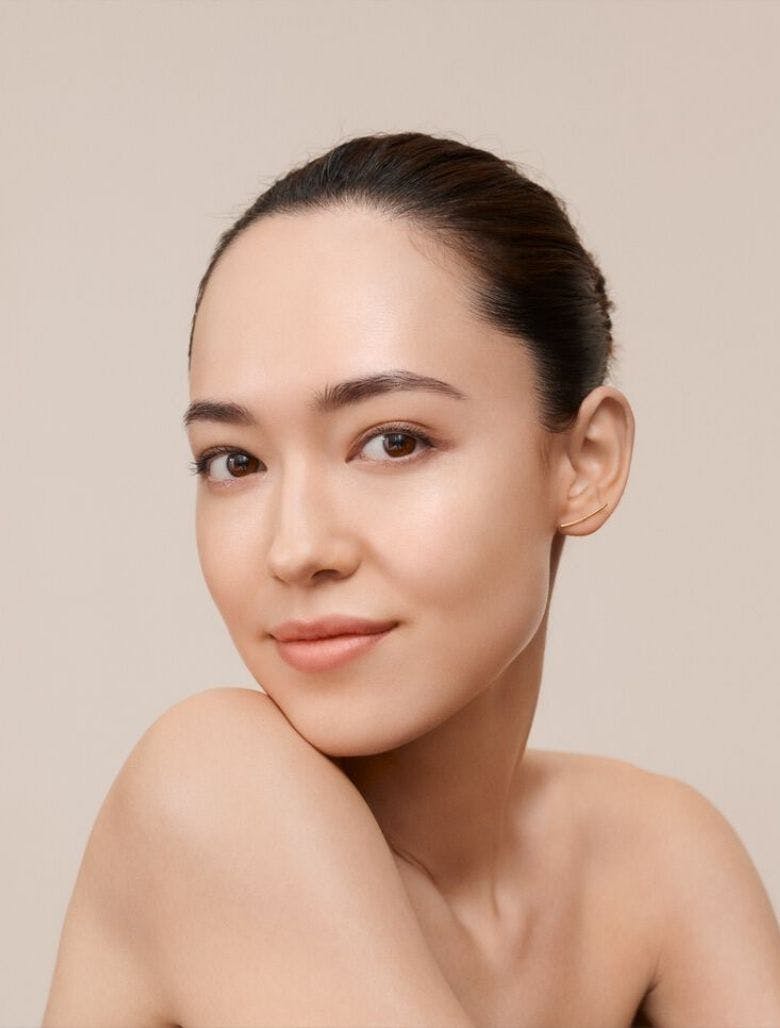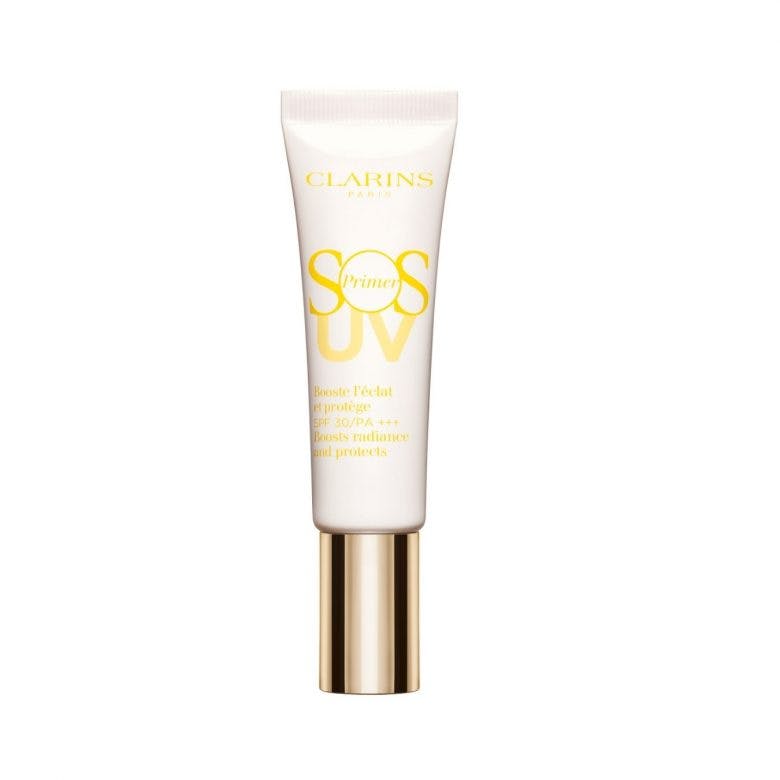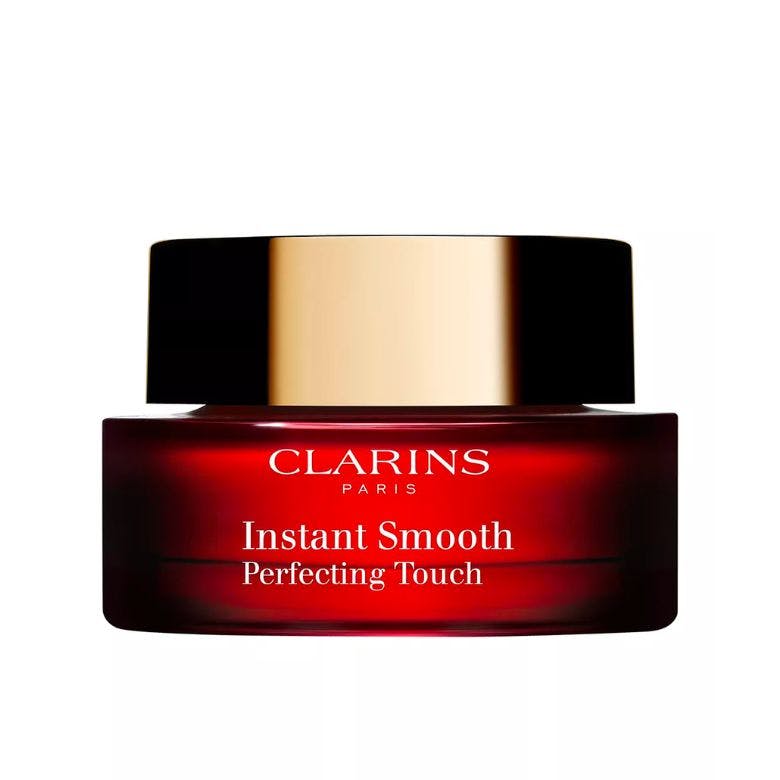Make-up Base Guide: What Is Primer And How To Apply It
4 minutes read
It’s becoming an open secret that primers are one of the keys to long-lasting make-up. Recent surveys show that primers are becoming a non-negotiable arsenal in women’s beauty routines. But how to use a primer before foundation – correctly- is still in the wraps.
Here, we explain everything you need to know about acing your base game. From choosing the correct finish (matte, dewy) down to how long you should let the primer dry before a foundation (very important). Keep scrolling.

What is a primer and what does it do?
43% of British women struggle to make their make-up last. This is their number one make-up frustration. “The biggest problem here is using the wrong type or not using a primer at all,” Charlotte McHale, Clarins Training Manager, says:
“What primer does is optimise the skin surface before a foundation is applied.
Your foundation and the make-up you would layer on need something to adhere to.
A primer prepares your skin, creating a smooth surface for your make-up to glide over. Think of it as painting a wall. When you prime your wall properly, you get a much smoother finish. If it’s plastered correctly, you get a nicer finished result without the bumps.” Basically, it blurs, hides, and evens out your skin texture, while helping to give your make-up some serious staying power.
Do you need a primer?
As for us, and McHale, it’s a straightforward ‘Yes!’. If you’re intending to wear a full face of make-up, this is an essential step to smooth skin, keeping our make-up in place, and blurring those large, humongous pores. But a big ‘yes!’ to boosting glow, fading fine lines and wrinkles and adding hydration to the skin.
How to choose the right primer for you
Old primers were just used for make-up longevity. Nowadays, they target different skin concerns since they are formulated with skincare benefits: hydrating, colour correcting, mattifying, and more. As a result, it can be puzzling to figure out which type of primer will work best for you. McHale says understanding what you want will narrow down this choice.
There are two things to consider when picking a primer: firstly, your skin type – although all (Clarins) primers are suitable for all skin types – and secondly, the finish that you’re looking for. – Charlotte McHale
Dewy Finish
McHale recommends a dewy, glowing finish for women with dry, normal, or combination skin. “Using something like our SOS Primer UV SPF30 is both hydrating and illuminating. It gives women that boost of youthful glow and radiance. It also protects your skin against UV rays thanks to SPF 30.”

Application: Apply primer after the last step of your skincare routine. You can use a make-up brush or your fingers and apply a pea-size amount over your entire face, neck and chest (plus, a quick swipe on the front of your hands will add protection from the sun).
Matte Finish
For women with oily or mature skin, Instant Smooth Perfecting Touch is a good primer pick. This mattifying primer has acacia micro-pearls which instantly fill in and smooth away wrinkles and dilated pores. It’s also ultra-light, so it doesn’t give you that icky feeling and leaves you with a shine-free face all day.

Colour Correct
A colour-correcting primer will neutralise skin issues such as redness, dark spots and sallowness. The SOS Primer range uses the power of the colour wheel to suit your colour correcting skin needs.
Redness: If you’re battling redness or serious skin conditions like eczema, or rosacea, go for a green-tinted primer like Green SOS Primer.
Dark spots: A coral-hued primer is best used for combatting the appearance of dark spots on the skin.
Skin Pigmentation: Use the apricot shade – Peach SOS Primer will reduce the look of acne scarring and skin pigmentation problems.

Fatigue: If you want to fake eight hours of sleep, use the Pink SOS Primer. The pink pigments will instantly give you an awakened look and restore freshness to your face.
Dullness: Slough away sallowness with the White SOS Primer. Apply in targeted areas. Using a colour correcting primer first means needing less foundation or a concealer to even your skin tone or conceal blemishes.
Beauty Daily Tip: Can I use a face primer under my eyes? Absolutely. Clarins’ primers are versatile. Read how to conceal your dark under eyes guide.
To finish? After primer, complete with your complexion-perfecting products and either add a touch of powder or a finishing spritz to lock it all down.
With all these in mind, you’ll never have to worry about your face devouring your make-up and finding it has disappeared by lunchtime. So, we’re not wasting time re-applying, giving you more time to have fun and enjoy life!
Sign up for our newsletter
We will keep you in the loop for special offers, exclusive gifts and product news.

